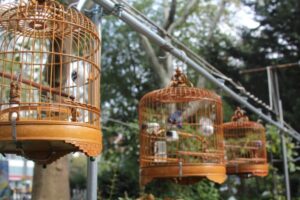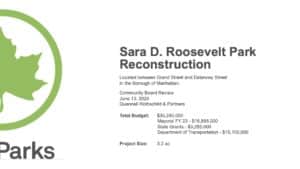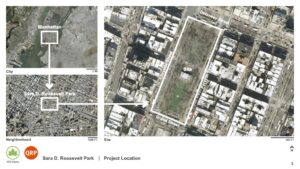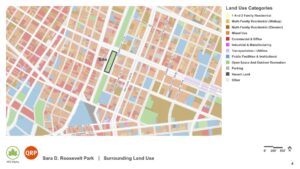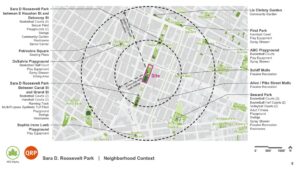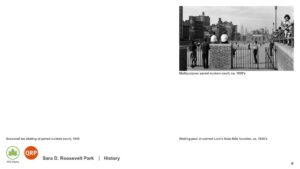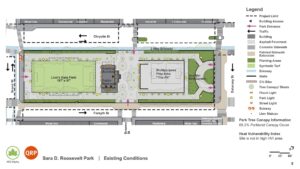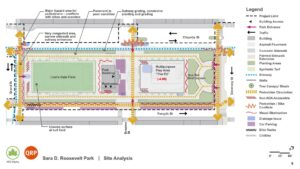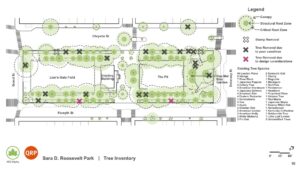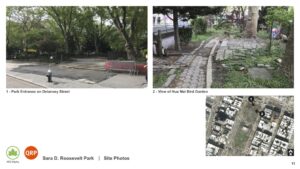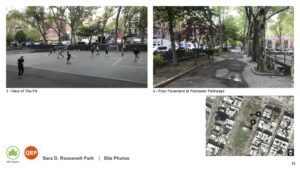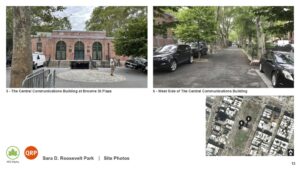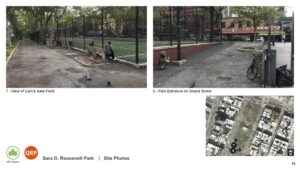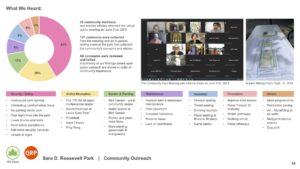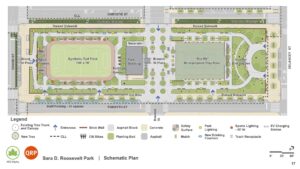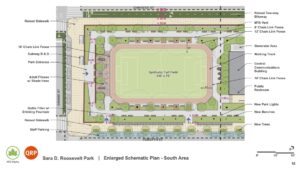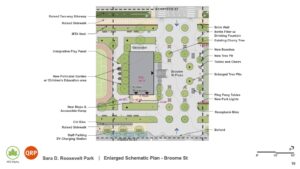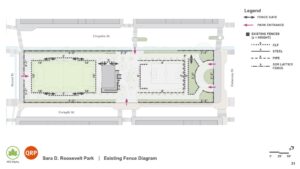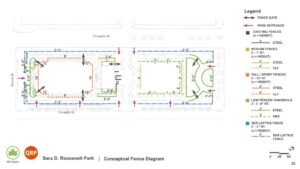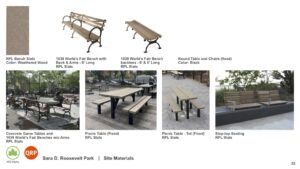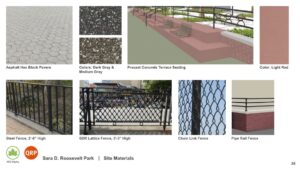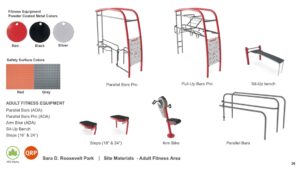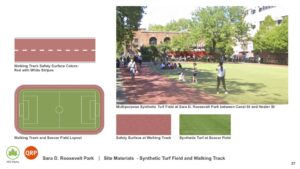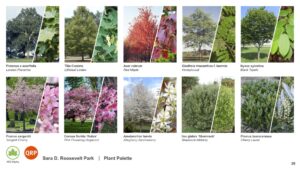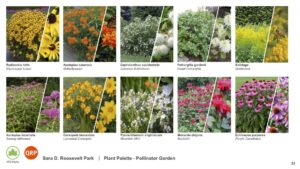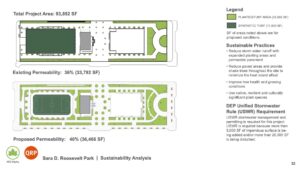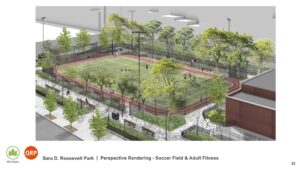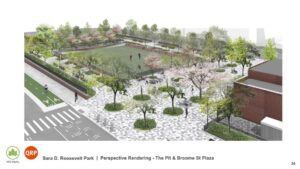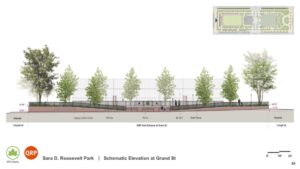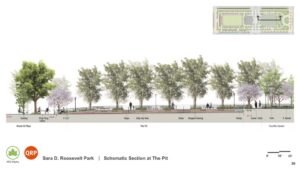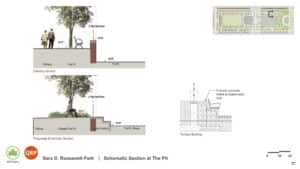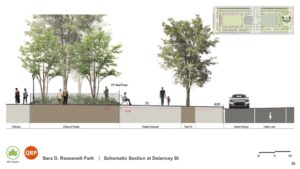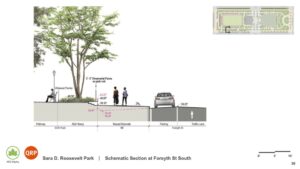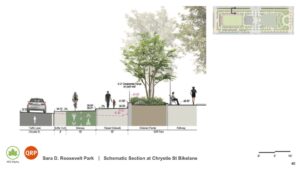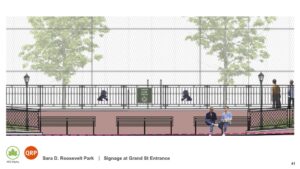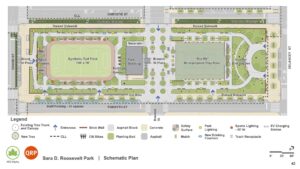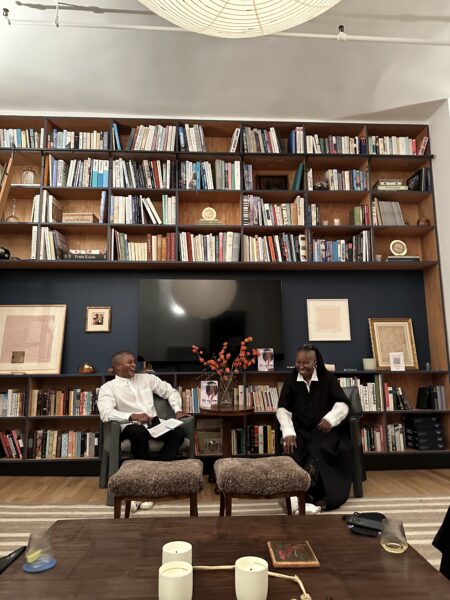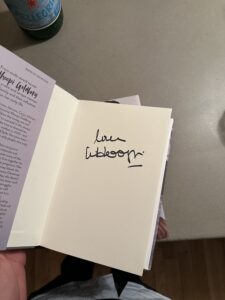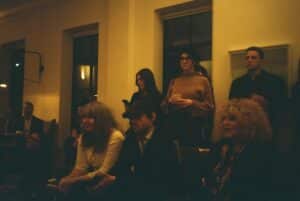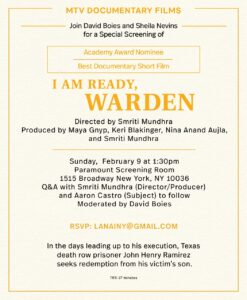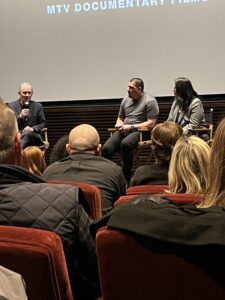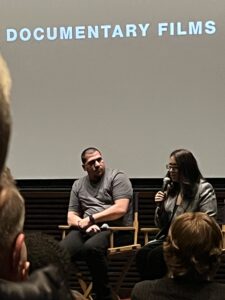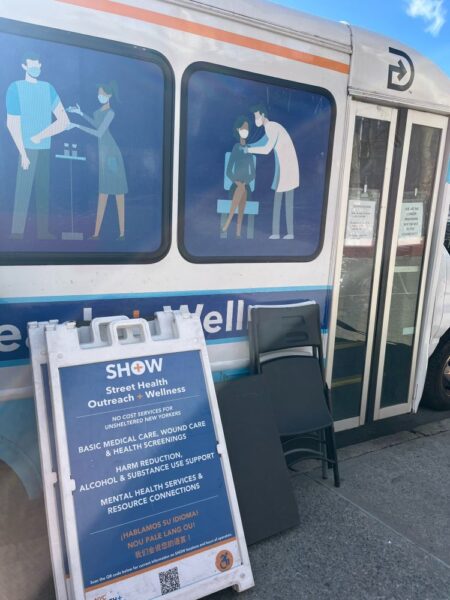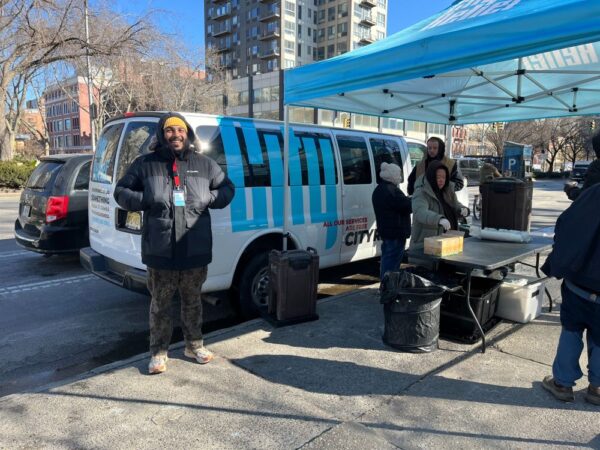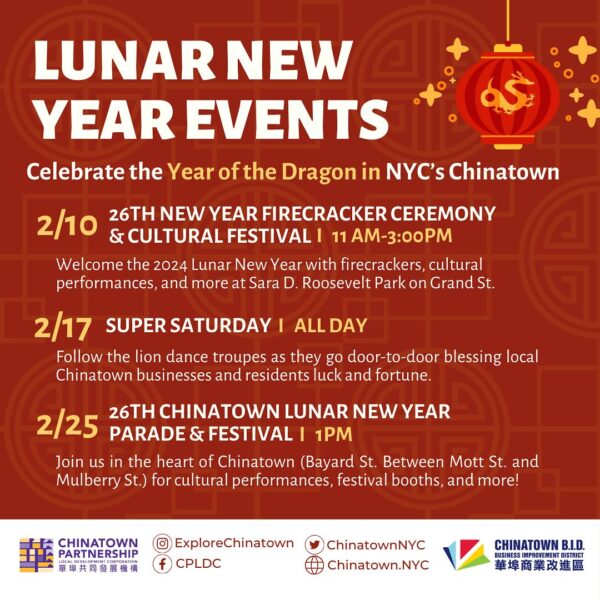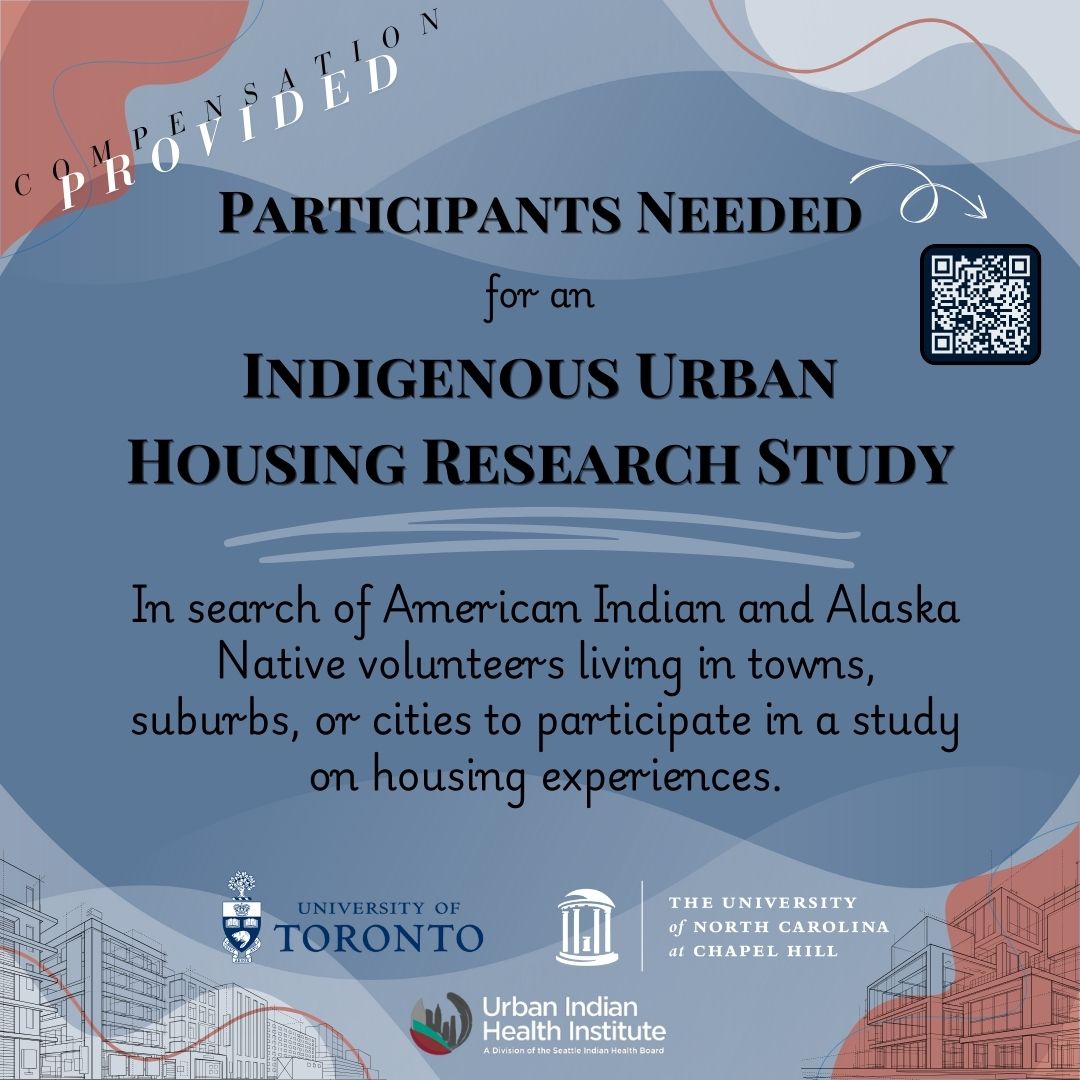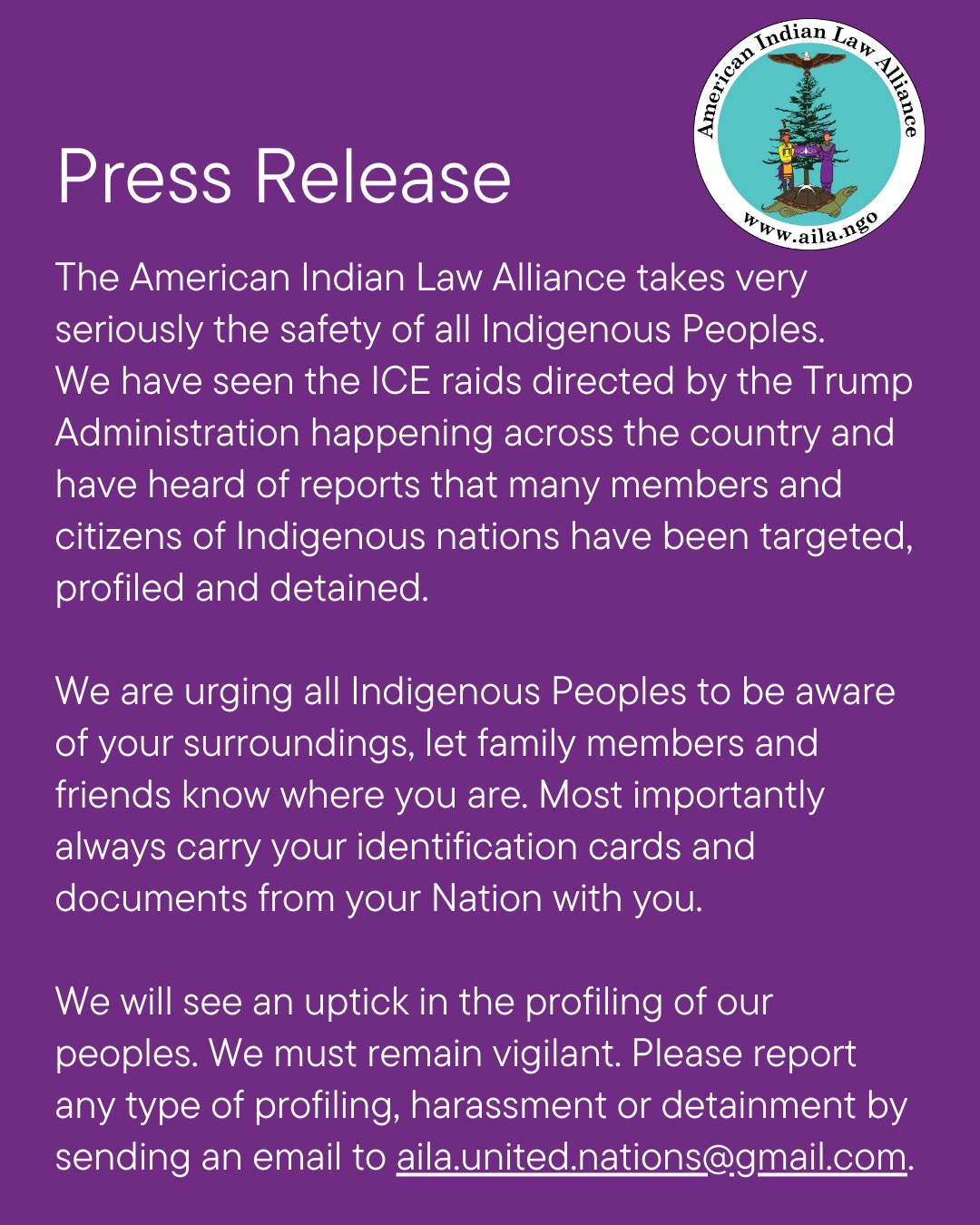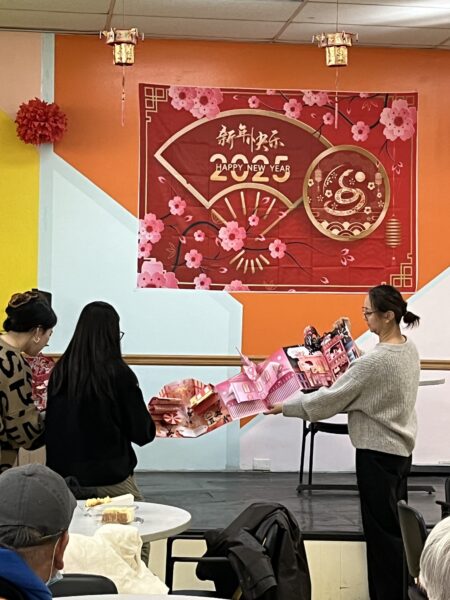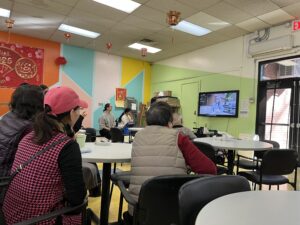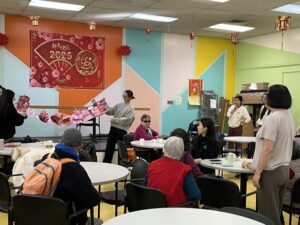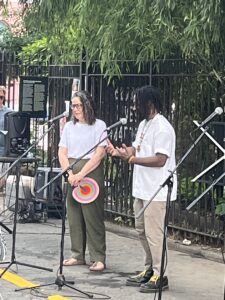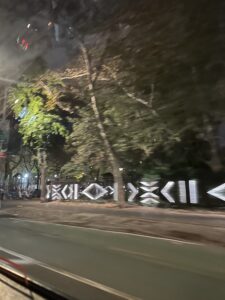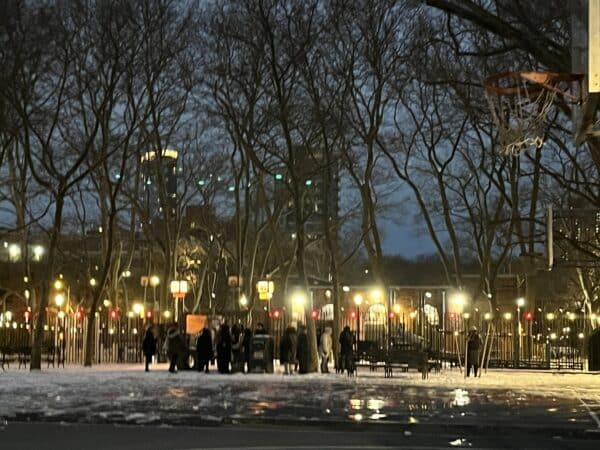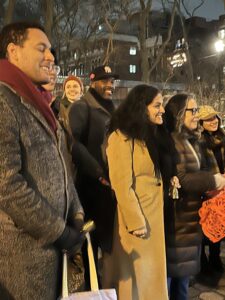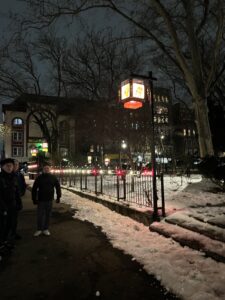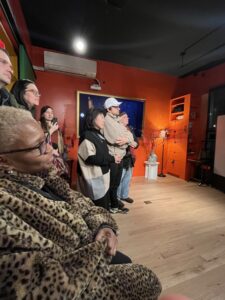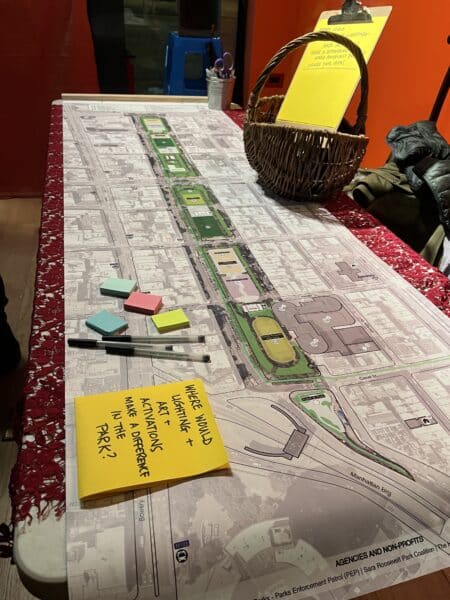Replace the Hester Sandbox with artificial turf lawn? (weigh in! link below) SRPAlliance.
Comment: “Add a feature for children that includes other sensory activities” – (ie nature!)?
Why does Parks use artificial turf?
Short answer? It’s durable, easy to maintain, and can be used year-round:
- Durability: Synthetic turf fields can withstand heavy use and last a long time.
- Low maintenance: Synthetic turf fields don’t need to be mowed, watered, fertilized, or sprayed with pesticides.
- Year-round use: Synthetic turf fields can be used in most weather conditions, including cold climates where grass might die.
- Even playing surface: Synthetic turf fields provide consistent playing surfaces.
- Injury prevention: Synthetic turf fields have padding that helps prevent injuries.
Alliance proposal for the Sandbox removal in Hester playground to replace a dangerous ADA inaccessible area, to remove the sandbox due to misuses, and replace with a green turf area. See details here:
On Synlawn from Garden Rant
Why We Don’t Recommend Artificial Grass for Most People Published 2021
Artificial (Synthetic) Turf
Last Updated: August 29, 2012
Synthetic turf fields using crumb rubber have been installed in many athletic and playing fields throughout New York City, the United States and the world. This fact sheet provides information on health and safety concerns related to synthetic turf.
Why is synthetic turf used in NYC?
Athletic and playing fields in NYC parks are made of different materials, including dirt, grass, asphalt and synthetic turf. Synthetic turf is a human-made product and is mostly installed in fields that are heavily used. Synthetic turf fields are used in NYC parks because they:
- provide even playing surfaces
- have padding that helps prevent injuries
- need no watering or mowing
- use no fertilizers or pesticides
- can be used year-round and in most weather
- do not need to be closed to protect or re-sod grass
- last a long time with little maintenance
What are synthetic turf fields made of?
The NYC Parks Department uses different kinds of synthetic turf depending on how and where it will be used. Most of the synthetic turf fields contain crumb rubber infill along with padding and drainage systems. Crumb rubber fields are made of the following materials:
- A bottom layer composed of plastic sheeting.
- Middle layers composed of crushed stones with plastic tubing for drainage and rubber padding for shock absorbance
- A top layer composed of plastic mesh with soft, plastic strands that resemble blades of grass
- Crumb rubber infill, made from recycled tires, is added to the top layer to provide extra padding and keep the grass upright. Sand is sometimes mixed with the crumb rubber.
Other synthetic fields are made of carpet-style materials and do not use crumb rubber. The carpet-style fields resemble a flat carpet and may have nylon carpet fibers. The carpet-style fields are used primarily in the conversion of asphalt fields to synthetic fields.
Currently, about 136 of the Parks Department’s 800 athletic fields are composed of synthetic turf material (99 crumb rubber infill, 19 alternative material infill, and 16 carpet-style). There are also 19 small play areas (15 crumb rubber infill, 4 carpet-style), often located within playgrounds, that are made of synthetic turf surfaces.
What chemicals can be found in the synthetic turf crumb rubber?
The crumb rubber used in synthetic turf is mainly composed of recycled tires, which contain human-made and natural rubber. Based on the review of research studies and reports, certain chemicals have been identified in crumb rubber. These include small amounts of polycyclic aromatic hydrocarbons (PAHs), volatile organic compounds (VOCs) and heavy metals such as zinc, iron, manganese and lead.
Can people be exposed to the chemicals found in crumb rubber?
Although the potential for significant exposure to the chemicals in crumb rubber is very low, there are three possible ways for people to have contact with these chemicals on artificial turf fields:
- Accidentally ingesting small amounts of crumb rubber by putting fingers in the mouth or not washing hands before eating after playing on the fields
- Breathing in dust and vapors while playing on the fields. Crumb rubber may become dust as it wears and the rubber may give off some vapors.
- Direct skin contact with the crumb rubber.
Are any health effects associated with these chemicals found in synthetic turf crumb rubber?
Several scientific research studies carried out in the United States and Europe have assessed potential exposures and health risks for people using turf fields containing crumb rubber. According to the Health Department’s review of these research findings, health effects are unlikely from exposure to the levels of chemicals found in synthetic turf.
At much higher levels, these chemicals can cause serious health effects. In laboratory studies, PAHs have caused organ damage and cancer in animals. Some PAHs may also pose a cancer risk for people exposed to high levels for long periods. VOCs are a mixture of chemicals that can cause eye, nose, throat and skin irritation. At high levels, some VOCs can also cause organ damage. In young children, exposure to lead may cause learning and behavioral problems and lowered intelligence.
Can people be exposed to these chemicals from other sources?
The PAHs and VOCs found in crumb rubber are very common in the urban environment. People can be exposed by breathing or eating or by getting dirt or dust on their skin. Rubber dust from car tires is a source of city air pollution and soil pollution. PAHs are present in exhaust, smoke, soot, urban soil and char-broiled foods. VOCs are released into the air from gasoline, paint, building materials and many other sources. Lead is commonly found in soil and dust in the urban environment because, in the past, it was used in paint, gasoline and many other products. In New York City, lead paint in homes is the most common cause of childhood lead poisoning.
Has lead been found in synthetic turf fields in NYC?
In 2008, elevated lead levels were found in the crumb rubber at Thomas Jefferson Park, a synthetic turf field in Manhattan. Since then, the Parks Department has replaced the field. The source of the lead contamination at the Thomas Jefferson Park was not identified. Some older carpet-style fields contain lead pigments in the nylon grass blades. As the carpet-style fields age and weather, lead dust may be released onto the surface of the field. Harmful lead exposure from these fields is unlikely when the carpet fibers are intact, but testing for lead dust can show if there is a potential lead hazard. Using protocols developed by the Health Department, the Parks Department tested the remaining 110 synthetic turf installations in New York City, both crumb rubber infill and carpet-style, for lead. With the exception of Thomas Jefferson Park, no other lead hazards were found.
If my children have played on Thomas Jefferson Park synthetic turf field, should they be tested for lead poisoning?
Lead exposures from the Thomas Jefferson field are unlikely to result in elevated blood lead levels in children who played on the field. The Health Department advises that all children at ages 1 and 2 years be tested for lead poisoning as required by state law. Also, children up to 6 years of age should be annually assessed for risk of lead exposure by their health care provider. Lead paint in older, poorly maintained housing remains the most common source of lead poisoning in NYC. Please see Childhood Lead Poisoning Prevention Program for more information.
Does the heat generated by synthetic turf pose a health risk to users?
Like asphalt, the crumb rubber in synthetic turf fields absorbs heat from the sun and gets hotter than dirt or natural grass. On hot days, some synthetic turf fields may be too hot to play on. To protect yourself from the heat, drink lots of water, wear light and loose fitting clothes, always wear shoes, take breaks often, and exercise moderately. If you experience symptoms of heat related illness, such as dizziness, weakness, headache, nausea, vomiting or muscle cramps, move to a shaded area, drink water and rest. Seek medical attention if you do not feel better. It is especially important that adults supervising children take precautions on hot days.
Are people who play on synthetic turf fields at risk of bacterial infections?
Bacterial infections, such as methicillin-resistant S. aureus (MRSA), have not been shown to be caused by synthetic turf fields. Bacterial infections among athletes are due mainly to physical contact and sharing contaminated towels or sports equipment. Coaches and players should be aware of the potential for MRSA transmission and infection among athletes. All skin cuts or abrasions should be washed with soap and water and covered immediately. School athletic departments and sports leagues, should use good hygienic practices and prohibit the sharing of towels and equipment that rubs against bare skin.
Should people continue to use synthetic turf fields with crumb rubber?
Yes. Regular physical activity is one of the most important parts of a healthy lifestyle. Synthetic turf fields allow access to open spaces for sports and physical activities. After any outdoor activity, people should wash their hands before eating or drinking. On very hot days, users should limit activities, take rest breaks and drink water.
What steps is the City currently taking regarding synthetic turf installations?
The Parks Department is currently taking the following steps:
- Using carpet-style or alternative infill materials on all new fields, rather than crumb rubber infill made from recycled car and truck tires.
- Implementing protocols to inspect, test, and replace any existing synthetic turf fields that may age or deteriorate.
- Posting public signage at all athletic fields and instructing field staff about potential heat-related risks involving synthetic turf, including overheating and dehydration.
- Using strict purchasing protocols to select the best synthetic turf products and requiring suppliers to provide information on chemical content, heating absorbency properties, environmental factors and health and safety factors.
- Assessing new technologies as they become available.
Where can I get more information?
The Health Department has issued a report on potential exposures and health effects related to synthetic turf fields. The report identified heat-related illness as the primary health concern and recommended steps for preventing heat-related illness. The report concluded that the potential for exposure to the chemicals found in the crumb rubber infill of synthetic fields is probably too small to increase the risk for any health effects. Read the full report (PDF).
The Health Department also completed an air quality survey to measure the air above synthetic turf fields containing crumb rubber infill for chemicals. Results show that air quality at the synthetic turf fields surveyed are similar to the air quality at natural grass fields. Read the full report (PDF).
Both of these were made possible by a grant from the New York Community Trust and partnership with the Fund for Public Health in New York.
More Resources
Last Updated: August 29, 2012


